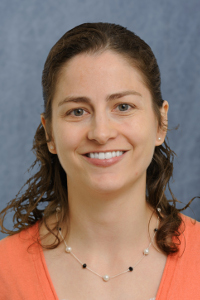New NSF award to acquire $1M nano-imaging instrument
Dr. Jacque Cole, Assistant Professor in the Joint Department Biomedical Engineering at NC State and UNC-Chapel Hill, has won an NSF award to acquire a new X-ray nano-computed tomography (nano-CT) instrument which will be located within the AIF.
The instrument is anticipated to cost nearly $1M, with nearly $700k coming from the NSF and remainder in cost-sharing from NC State. Jacob Jones, Director of AIF, interviewed Dr. Cole about the award and the transcript is shown below. The award abstract with more details is found here.
Q: First, you are relatively new to NC State. Tell us briefly about your education/work background and your research interests.

A: I received a Bachelor of Mechanical Engineering from Auburn University and an M.S. and Ph.D. in Mechanical Engineering from Cornell University. I then completed two postdoctoral fellowships at the University of Michigan in Chemistry and Orthopaedic Surgery. In 2013, became an Assistant Professor in the Joint Department of Biomedical Engineering at NC State and the University of North Carolina at Chapel Hill. I founded the Orthopaedic Mechanobiology Laboratory (http://oml.web.unc.edu/), and the overall goal of our research is to understand why we lose bone and why we fracture with various clinical conditions like aging, stroke, obesity, and nerve injury by studying bone mechanics, vasculature, and metabolism.
Q: What is an X-ray nano-CT system, in layman’s terms?
A: A nano-CT system uses X rays to visualize and measure the internal structure of many types of objects without having to cut them open. It works much like medical CT scanners that hospitals use to obtain 3D images of the inside of the body, but it provides details at a much smaller scale – down to less than 1 micrometer (about 100 times smaller than the thickness of a human hair). It enables the study of internal structures in a variety of materials, providing measurements like porosity, connectivity, and permeability, which will advance materials characterization and design for many research and industry focus areas.
Q: What are the interesting capabilities or features of this instrument?
A: This instrument will fill a critical gap in CT and microscopy equipment in the region and will facilitate a broad array of structural and material measurements not currently possible. This technology will add nondestructive volumetric imaging at the nanoscale that requires minimal sample preparation, has a relatively large field of view, can distinguish low- and high-density materials simultaneously, and can incorporate environmental conditions such as mechanical and thermal stages.
Q: For what applications will the system be used?
A: Numerous research and industry programs at NC State and the surrounding region will benefit from this system. It will advance fundamental understanding about internal nano- and microscale structures and complex interfaces within a broad range of materials, including bone, biopolymers, multilayer capacitors, additive manufactured metal parts, and fibrous materials. A better understanding of internal structure will advance technologies in materials design and fabrication and will aid the development of innovative approaches for medicine and engineering. We have already gathered the interest of many researchers in the main areas of biomedical sciences, biological and social sciences, materials science and characterization, materials synthesis and fabrication, and textiles and fibrous materials.
Q: Is this your first NSF proposal or first NSF award? What do you think made this proposal highly competitive? What put it over the top?
A: This is only my second NSF proposal (my first MRI proposal) and my first NSF award. The review panel was highly enthusiastic about the proposal, especially in its expected impact on so many researchers and the advancement of knowledge in a wide and diverse ranges of fields. Our pledged users included over 30 investigators from 6 colleges and 14 departments at NC State, as well as other entities (The Nonwovens Institute, Center for Dielectrics and Piezoelectrics, North Carolina Museum of Natural Sciences) and universities (UNC-Chapel Hill, UNC-Greensboro, NC A&T, Duke, Wake Forest, Clemson, Georgia) in the region. The proposal was strengthened by locating the nano-CT system in the AIF, with its established infrastructure and proven proficiency in instrument management, operation, and training. The instrument will be the first of its kind in the Southeast that is in an open-access, core university laboratory, and it is expected to accelerate knowledge discovery and enhance education and outreach activities in the Research Triangle area and beyond, particularly through partnership with the Research Triangle Nanotechnology Network (RTNN).
- Categories: